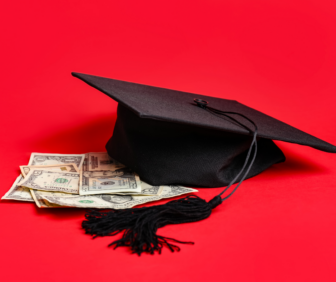Over the past few months, Michigan Future facilitated a College Success book club for a group of stakeholders in the city ![]() working to get more Detroit students to and through college. The purpose of the club was to have a regular discussion with college access and success leaders about both the “content” of student success – the obstacles students face on the path to college graduation, and how students overcome those obstacles – and about what we can collectively do in the city to get more students across the finish line.
working to get more Detroit students to and through college. The purpose of the club was to have a regular discussion with college access and success leaders about both the “content” of student success – the obstacles students face on the path to college graduation, and how students overcome those obstacles – and about what we can collectively do in the city to get more students across the finish line.
Between 2008 and 2010, roughly 6,500 students graduated each year from Detroit high schools, both charter and DPS. Using publicly available data on postsecondary success from Michigan’s Center for Educational Performance and Information, we found that just 11% of students, or just over 700 students from each graduating class, earned a four-year college degree six years after graduation. Just 16% of students, or a little over 1,000 students from each class, earned a degree or postsecondary certificate of any kind. The purpose of the book club was to think through what needs to happen in the city in order for thousands more Detroit students to graduate from college every year.
We held meetings on three broad topics that we need to get right if more Detroit students are going to earn college degrees. The first is college matching. There’s now a large body of research demonstrating that, all else equal, if a student attends an institution for which they are overqualified – if they undermatch – they’re far less likely to end up with a college degree than if they had attended the most selective school they could gain admission to. Researchers find that this is true because more selective colleges have more resources, a student population of higher-achieving students, and much higher graduation rates than less selective institutions. Ensuring that Detroit students attend the most selective institutions with the highest graduation rates, for which they qualify, is one important step to getting more Detroit students a college degree.
But in addition to pushing more students to attend colleges with good graduation rates, we also need to ensure more Detroit students are eligible for admission to selective institutions. So our second meeting focused on how we get more students college-ready, starting in the 9th grade. This includes building in students both the aspiration and motivation to attain a college degree, as well as the academic habits students need to be successful, both in high school and in college. We read about the importance of students building their identities and forming a positive vision of themselves and their futures, how schools can unintentionally damage important academic mindsets, and how student grades can be used to both develop and measure important college-going behaviors.
And finally, we held a session on what should happen after students leave high school, looking at the traits of successful college students, and the supports all students need. We read about the ways that low-income students often feel like they don’t belong on a college campus, and how to counteract those feelings; how colleges can redesign themselves to support students through to graduation; and how high schools can redesign themselves to set college graduation as the goal they measure themselves against.
But in addition to learning, we also tried to think through where we go from here. With so few Detroit students making it to college graduation, and a laundry list of obstacles facing so many of them, it can be daunting to think about a plan of action, or even where to start. But here are a few ideas.
First, the job of high schools needs to fundamentally change, such that they take full ownership not over their students’ high school graduation, but their long-term success. High schools that take ownership over their students’ long-term success, will design themselves to build the skills needed for postsecondary success (rather than simply narrowly-defined math and reading skills), will match students to the postsecondary institutions where they’ll have the highest likelihood of success, and will track and support their students through to college graduation.
To do all these things effectively, we also need better data sharing arrangements between K-12 and higher education. Why, when, and from where are students dropping out? What knowledge, skills, and mindsets do students lack? And what supports do they most need? All of these questions can be answered through better knowledge and information sharing between our K-12 and higher education institutions.
And finally, throughout a student’s education, we need to offer more opportunities for them to build strong relationships with caring adults, and be exposed to a broad range of experiences, to help them build a sense of identity and a positive vision for their future. One of the major findings from the book Coming of Age in the Other America, which tracked Baltimore youth from adolescence through early adulthood, was that students who latched on to some sort of “identity project” – which can be anything from an interest in dance to music to Japanese anime – during adolescence, were far more likely than others to continue to stay engaged in school. We need to treat students’ broad exposure to a range of experiences and positive role models not as something extra, but as an essential goal of our education system.
There’s a lot more to be done, and these three ideas are far from sufficient. You can find the reading list for our book club here – we’d love to hear your thoughts, what else we should be reading, and what ideas you have. But one thing that’s certain is that if we don’t collectively – higher education, high schools, and community partners – hold ourselves accountable for students’ success, little progress will be made.







